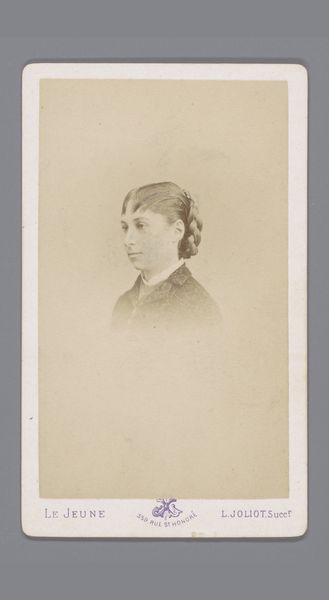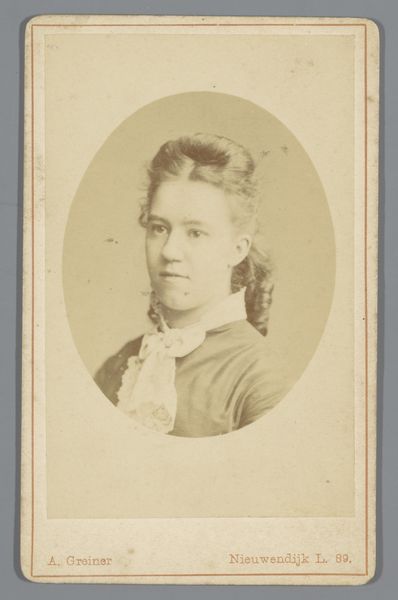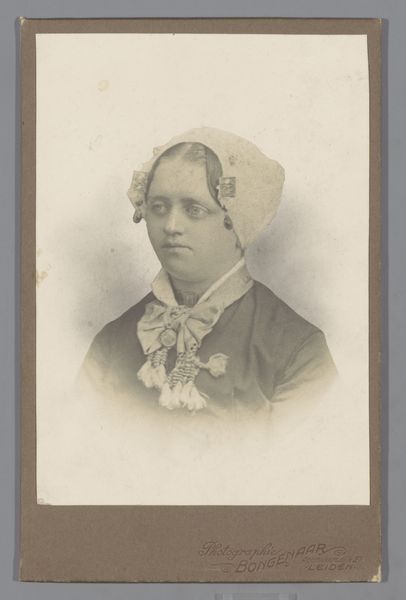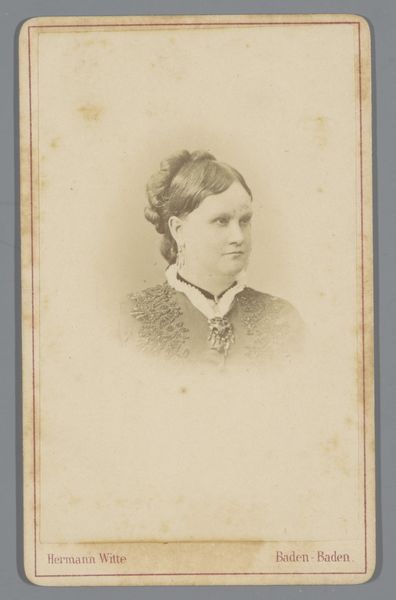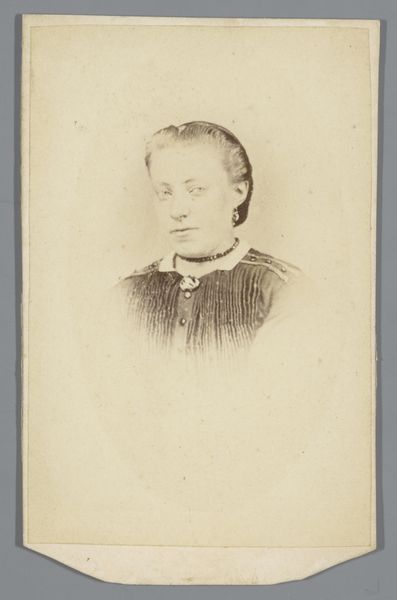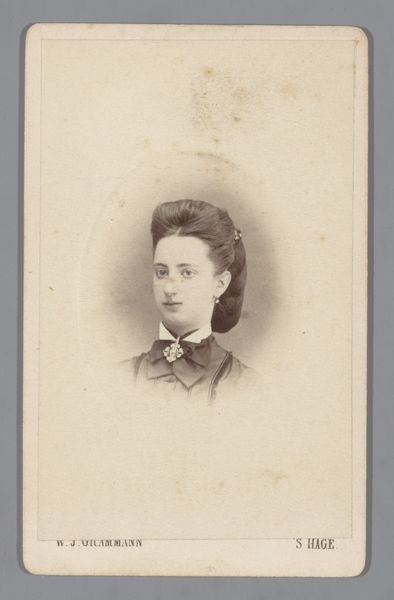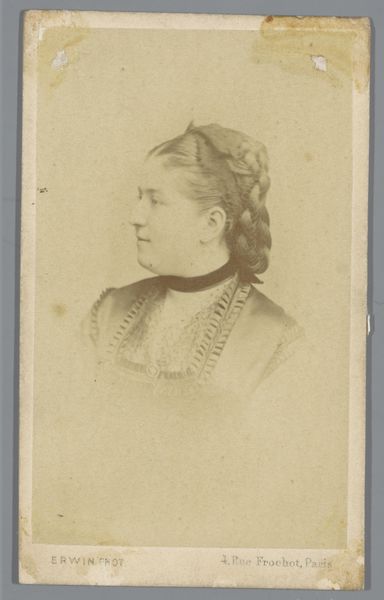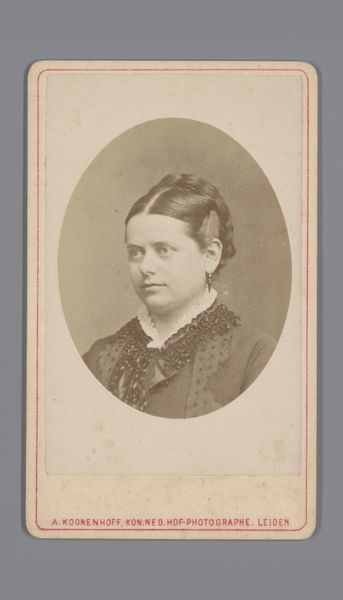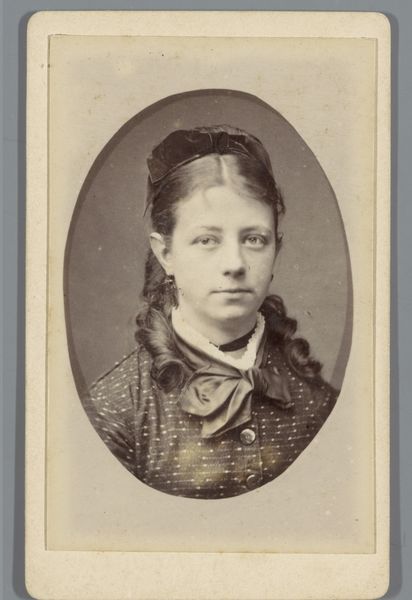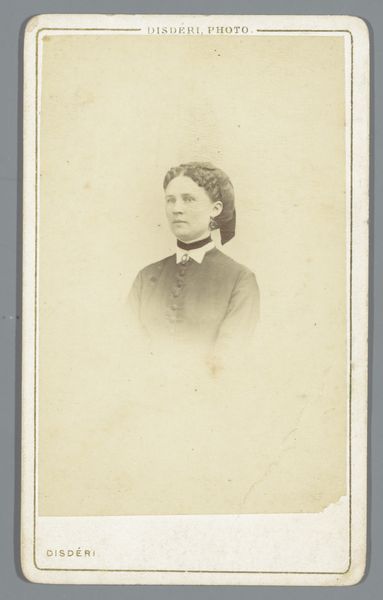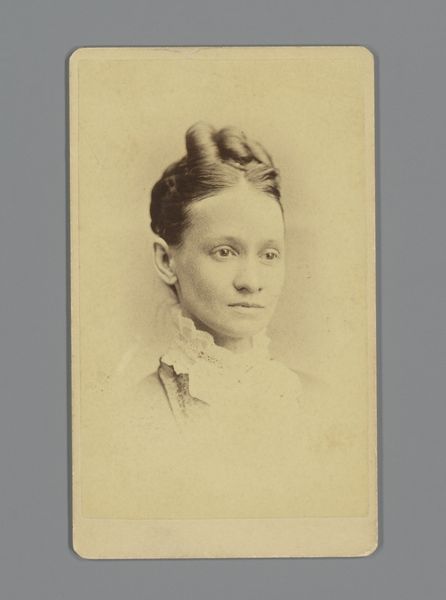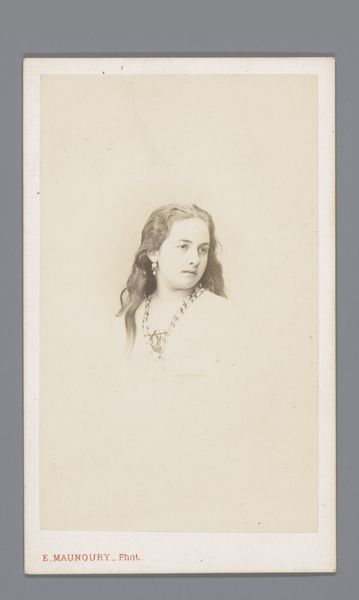
daguerreotype, photography
#
portrait
#
daguerreotype
#
photography
#
coloured pencil
Dimensions: height 105 mm, width 61 mm
Copyright: Rijks Museum: Open Domain
Curator: Before us we have a portrait, circa 1865, attributed to Johannes Baer. It is titled "Portret van een vrouw" and uses the daguerreotype technique of early photography. What's your initial impression? Editor: My initial feeling is somber elegance. The tonality creates a sense of subdued refinement, but what draws me in is the almost sculptural quality of the sitter’s face and the delicate use of light. Curator: I agree, there’s a definite artistry in the distribution of light, highlighting her features with remarkable clarity for the period. Notice how the tonality is achieved through chemical reactions of silver iodide rather than, say, manipulated darkroom methods. It represents a unique form of material production. Editor: Exactly! And you can tell much about the studio practice from this material investigation: the glass plate preparation, the precision needed for coating, and how atmospheric conditions may have played a role in the final image quality. Even the mounting has significance – indicating standardization across many cartes-de-visite printed in the period. Curator: An important point. Focusing on her adornment: the intricate floral headpiece, her delicately buttoned blouse and ribbon choker… what visual signifiers can we draw from those? How does this create a narrative? Editor: I interpret these adornments as signs of social standing. Each detail is precisely placed; communicating refinement as part of a conscious self-representation within very strict codes. Consider that these are manually created details and mass produced – that changes how we read what they are meant to signify. Curator: This process – going from the photographic print to a sort of mass produced image that many people had access to is remarkable! Editor: It absolutely is. Studying its material creation methods illuminates the social context behind such artifacts of our past. Curator: Indeed, understanding the mechanics and artistry helps us unravel social meanings held within images such as this. Editor: Absolutely, and in considering process and the people behind that process, perhaps this seemingly formal portrait provides a mirror for deeper investigation of human social history.
Comments
No comments
Be the first to comment and join the conversation on the ultimate creative platform.

